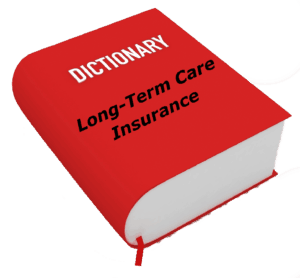Part 5: Four things the New York Times article on long-term care insurance got right
Four things the New York Times article on long-term care insurance got right
New York Times: “Many experts believe it’s untenable to expect that a private insurance market can protect most people from the growing burden of long-term care costs.”
That’s 100% true. Long-term care insurance is NOT for “most people”. At least 50% of retirees do NOT need long-term care insurance because they can qualify for Medicaid-funded long-term care. Why is it that so many people can qualify for Medicaid-funded long-term care? Because it’s pretty easy to qualify for Medicaid-funded long-term care. In most states, a married couple can qualify for Medicaid-funded long-term care even if they have $713,000 of home equity AND $157,000 in savings.
New York Times: “Last year, insurers paid more than $13 billion to cover 345,000 long-term care claims, according to industry figures. Many policyholders and their relatives reported that their plans helped them avert financial catastrophes when they faced long-term care costs that would have otherwise eviscerated their savings.”
That’s 100% true. Despite the misleading headlines and “half-true” quotes, long-term care insurance works for hundreds of thousands of claimants every year. According to the NAIC Long-Term Care Experience Report, as of December 2021, the long-term care insurance industry has paid over $190 BILLION in long-term care insurance claims to over 1.5 MILLION policyholders.
See page 6, two columns: “incurred claims” and “number of claims open.” Look at rows titled “Total Inception-to-Date” under both individual and group policies.
https://www.ltcshop.com/naic-long-term-care-insurance-experience-report/
New York Times: “But others have been startled to learn that policies they paid into over decades will not fully cover the escalating present-day costs of home health aides, assisted-living facilities or nursing homes.”
That is also 100% true! One of the biggest regrets long-term care insurance policyholders have is that they did NOT buy enough long-term care insurance. Long-term care insurance companies don’t decide how much coverage someone should buy. The consumer purchasing the policy decides how much coverage to buy—more times than not they buy too little.
Also, most policies purchased in the 1980’s and 1990’s did NOT have any inflation protection. Fortunately, that’s changed. Most people who have purchased long-term care insurance over the past 15 years have purchased long-term care partnership policies. Long-term care partnership policies MUST include some type of inflation protection.
New York Times: “But the insurer said that there was not enough evidence that she needed help with two daily living activities or had severe cognitive impairment, conditions that would trigger coverage… In 2022, the proportion of traditional long-term care claim denials varied, from 4.5 percent in Rhode Island to 9.6 percent in Alaska, according to the National Association of Insurance Commissioners.”
This is also 100% true. In most states, 19 out of 20 long-term care insurance claims are approved. In some states, 18 out of 20 claims are approved. Long-term care insurance is a legal contract. If a claimant does not meet the benefit eligibility criteria, the claim must be denied.
Fortunately, most of the 7 million long-term care insurance policies in force today meet the federal guidelines. That means that in order to qualify for benefits, the claimant must need assistance with any 2 of the 6 Activities of Daily Living OR must require supervision due to a cognitive impairment in order to be protected from threats to health and safety.
In Part 6 of our in-depth analysis of the New York Times long-term care insurance article, we’ll discuss what they got VERY WRONG.
If you missed any part of our New York Times long-term care insurance article analysis, start with Part 1.


